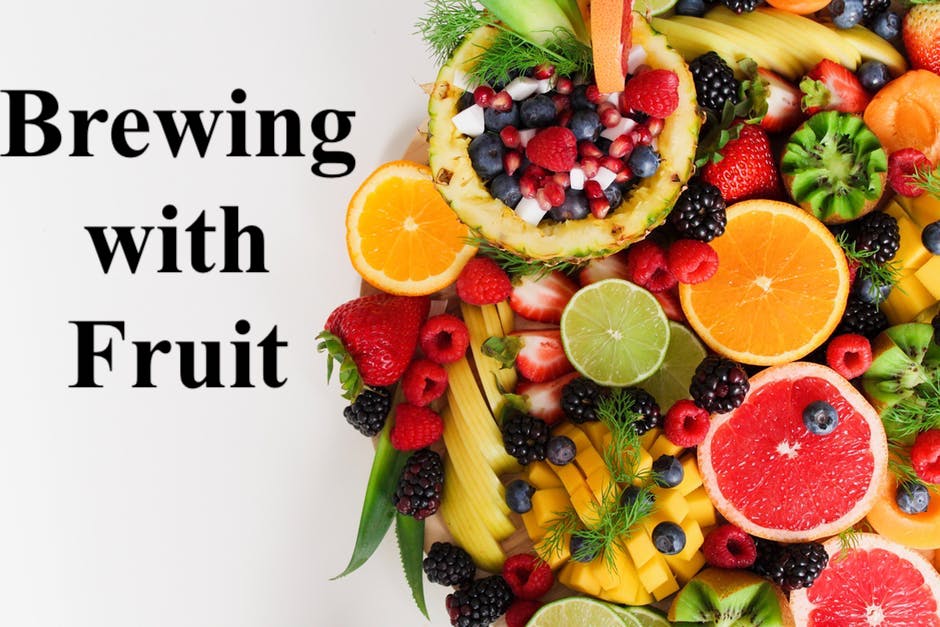So you’ve discovered the art of homebrewing beer. Now that you’ve conquered the first steps toward mastering the art, you want to try something new and different.
You decide you want to add a bit of pizzazz to an otherwise drab and uninspired brew. A good way some people think to do this is to add fruit.
But adding fruit to a craft beer isn’t just about adding a mix of fruit to your fermenter.
You’ll need to take some steps toward preparing and adding the fruit to your beer. Below you’ll find a guide to brewing with fruit, complete with everything you could want to know about making the most of your fruit brewing desires.
Choose a Type of Fruit
The first step to adding fruit to your beer is choosing the fruit. Keep in mind the quality of your finished product will rely on the quality of the components.
Some people will recommend you only use fresh fruit. Others say you can use juice or pureed fruit.
When you’re choosing a fruit, you can choose from any fruit you can imagine. The only limits are your own creativity and willingness to experiment. Different fruits will add different levels of sugar, acidity, and bitterness.
Keep in mind the sugar content of certain fruits. During the fermentation process, sugar converts to alcohol. This means sweeter fruits will add more alcohol to your finished product.
In a similar vein, different acidity levels will create different levels of tang in your finished beer.
Choose your fruits wisely and remove all stems, pits, and seeds.
Fresh Fruit
Using fresh fruit comes with certain advantages. The flavor of the fruit will be intact. Pureed fruits and juices can have an altered taste as a result of processing.
However, fresh fruit can make the process more labor-intensive and result in unwanted microorganisms.
Anything you add to your beer should be sterile.
Juices and Purees
You may be hard-pressed to find certain fruits at different times of the year. This could make the fresh fruit option near-impossible.
Juices and purees are typically available year-round. They will also be free of microorganisms, unlike fresh fruit.
However, some people advise you to stay away from purees and juices, as you could sacrifice overall flavor.
Quality Fruit for Quality Beer
When you’re choosing your fruit, you need to consider the quality. If you want a quality end product, you should use better fruits.
Taste your fruits before you add them to your beer. If the fruit tastes fine, your beer will taste fine. Similarly, if your fruit tastes great, your beer will taste great.
The Amount of Fruit You’ll Need
You may be looking for a definite answer on the amount of fruit you should add to your beer. This is a difficult question to tackle, as there is no definite rule. Your fruit-to-beer ratio will depend on the type of fruit and beer.
Beers with more bold flavors, like stouts, will require more fruit if you want to notice the fruity flavors. Lighter ales might require less fruit.
Some fruits have more powerful flavors than others. Consider the difference between a cherry and an apricot.
Cherries are much sweeter and flavor than apricots. Because of this, you might wish to add fewer cherries to a beer but more apricots.
To figure out how much fruit you should add to your beer, you’ll need to experiment. This is going to offer the most in this regard. Make several batches and record how much fruit you add.
This is your chance to put on your scientist hat and have some fun. You can even force your friends and family into sitting in on taste tests.
When to Add Your Fruit
One of your first instincts may be to add the fruit to your wort during the initial boiling process. You may think it will kill microorganisms and reduce contamination. The truth is, avoid this.
Boiling the fruit released pectin and result in an off-taste. It may also cloud the beer.
Instead, you have two viable options for adding the fruit.
Add to the Hot Wort
You can add the fruit while the wort is still hot. The wort is essentially the sweet liquid fermented to make beer. You can think of this like steeping a tea.
After you boil the wort, place the fresh fruit in a nylon bag. Then, place the bag in your hot wort and let it sit for about 30 minutes or longer.
You can even choose to steep the fruit in the wort before the boil, but the most common method is after the boil.
Add to the Fermenter
You can consider adding the fruit to the fermenter, like the ones offered at Woody’s Home Brew. If you do this, you’ll need to sanitize and puree the fruit. This is where pureed or juiced fruit will come in handy.
If you use already pureed or juiced fruit, you won’t need to worry about pasteurization. These products should already have been through a pasteurization process.
For the best results, you should consider adding the fruit juice or puree to the second fermentation. This will maximize the fruit flavor in the finished product.
Traditional brewing uses a two-step fermentation process. Many brewers will recommend this is the time to add any fruit.
You certainly don’t need to use a secondary fermenter, but it can help a lot if you want to add fruit to your beer.
Brewing With Fruit: The Takeaway
Once you’ve figured out the nuances of brewing beer, you can try new things. One thing you may wish to try is adding fruit.
You can add levels of sweetness and acidity, depending on the fruits you choose. The above guide is designed to give you a place to start on this journey.
Consider doing some experiments when brewing with fruit and keeping a journal. Try new things and get creative.
Maybe your next step is to try marketing your concoction. If so, read up on some marketing ideas.











